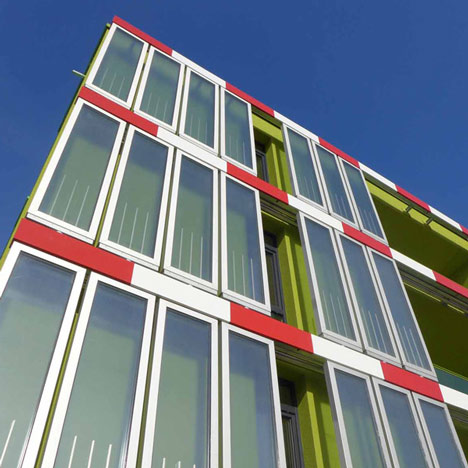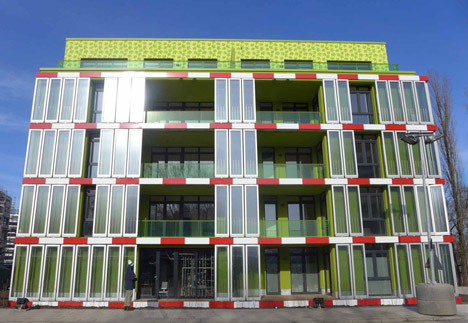
Arup unveils world's first algae-powered building
News: the world's first building to be powered entirely by algae is being piloted in Hamburg, Germany, by engineering firm Arup.
The "bio-adaptive facade", which Arup says is the first of its kind, uses live microalgae growing in glass louvres to generate renewable energy and provide shade at the same time.
Installed in the BIQ building as part of the International Building Exhibition, the algae are continuously supplied with liquid nutrients and carbon dioxide via a water circuit running through the facade.
When they are ready to be harvested they are transferred as a thick pulp to the technical room inside the building and fermented in a biogas plant.

The facade also absorbs heat from the sun to warm the building's hot water tank, while sunny weather encourages the algae's growth to provide more shade for the building's occupants.
"To use bio-chemical processes for adaptive shading is a really innovative and sustainable solution, so it is great to see it being tested in a real-life scenario," said Jan Wurm, a research leader at Arup.
"As well as generating renewable energy and providing shade to keep the inside of the building cooler on sunny days, it also creates a visually interesting look that architects and building owners will like," he added.
The project was led by Arup in cooperation with German consultancy SSC Strategic Science Consult and the building was designed for the exhibition by Austrian firm Splitterwerk Architects. The shading louvres were made in Germany by Colt International.
The International Building Exhibition in Hamburg continues until 3 November.
Algae-powered buildings have until now remained in the conceptual stage, with ideas for a building covered in modular algae pods and a biofuel-powered skyscraper in London previously featuring on Dezeen – see all algae architecture and design.